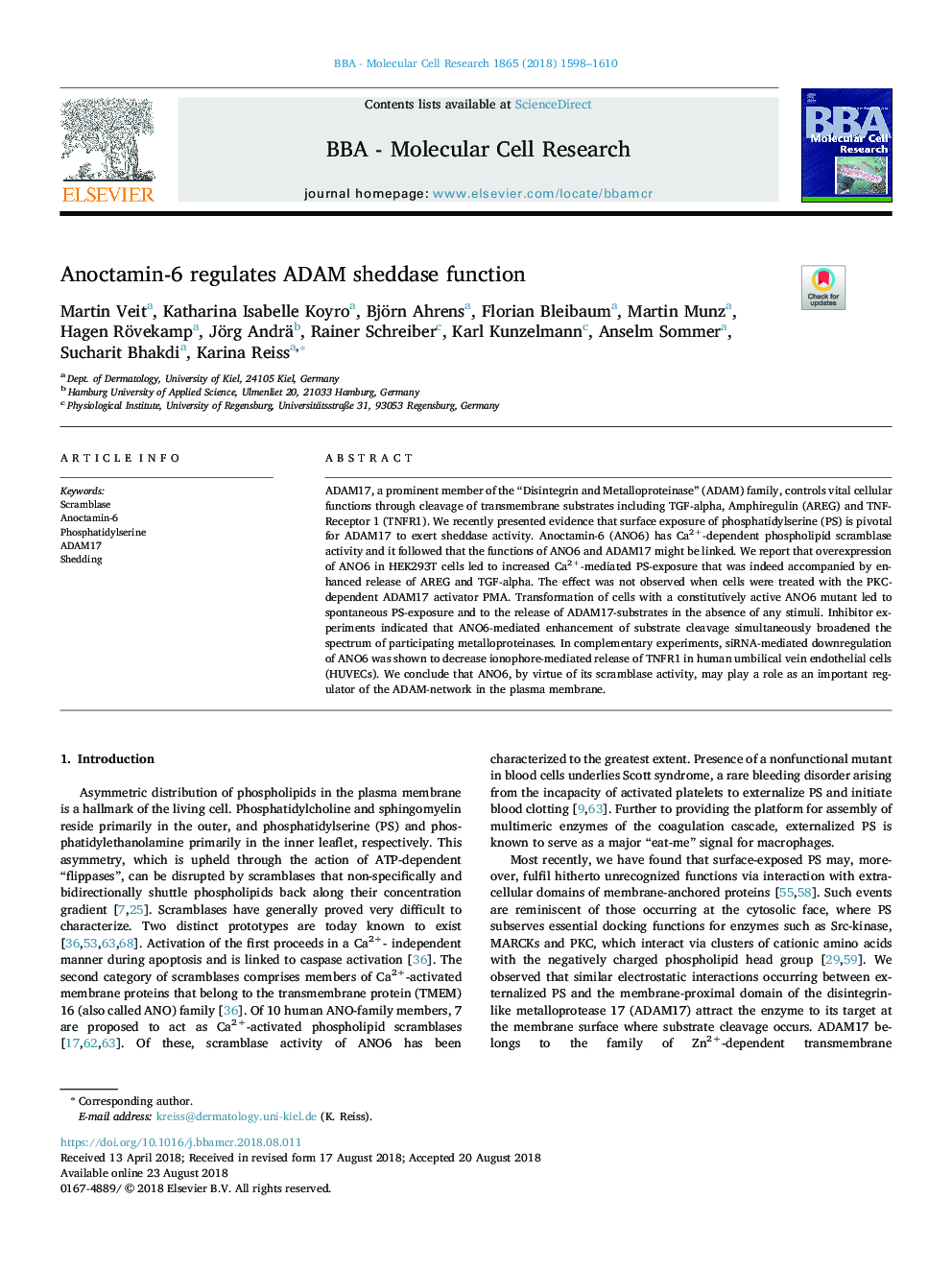| Article ID | Journal | Published Year | Pages | File Type |
|---|---|---|---|---|
| 10129099 | Biochimica et Biophysica Acta (BBA) - Molecular Cell Research | 2018 | 13 Pages |
Abstract
ADAM17, a prominent member of the “Disintegrin and Metalloproteinase” (ADAM) family, controls vital cellular functions through cleavage of transmembrane substrates including TGF-alpha, Amphiregulin (AREG) and TNF-Receptor 1 (TNFR1). We recently presented evidence that surface exposure of phosphatidylserine (PS) is pivotal for ADAM17 to exert sheddase activity. Anoctamin-6 (ANO6) has Ca2+-dependent phospholipid scramblase activity and it followed that the functions of ANO6 and ADAM17 might be linked. We report that overexpression of ANO6 in HEK293T cells led to increased Ca2+-mediated PS-exposure that was indeed accompanied by enhanced release of AREG and TGF-alpha. The effect was not observed when cells were treated with the PKC-dependent ADAM17 activator PMA. Transformation of cells with a constitutively active ANO6 mutant led to spontaneous PS-exposure and to the release of ADAM17-substrates in the absence of any stimuli. Inhibitor experiments indicated that ANO6-mediated enhancement of substrate cleavage simultaneously broadened the spectrum of participating metalloproteinases. In complementary experiments, siRNA-mediated downregulation of ANO6 was shown to decrease ionophore-mediated release of TNFR1 in human umbilical vein endothelial cells (HUVECs). We conclude that ANO6, by virtue of its scramblase activity, may play a role as an important regulator of the ADAM-network in the plasma membrane.
Related Topics
Life Sciences
Biochemistry, Genetics and Molecular Biology
Biochemistry
Authors
Martin Veit, Katharina Isabelle Koyro, Björn Ahrens, Florian Bleibaum, Martin Munz, Hagen Rövekamp, Jörg Andrä, Rainer Schreiber, Karl Kunzelmann, Anselm Sommer, Sucharit Bhakdi, Karina Reiss,
